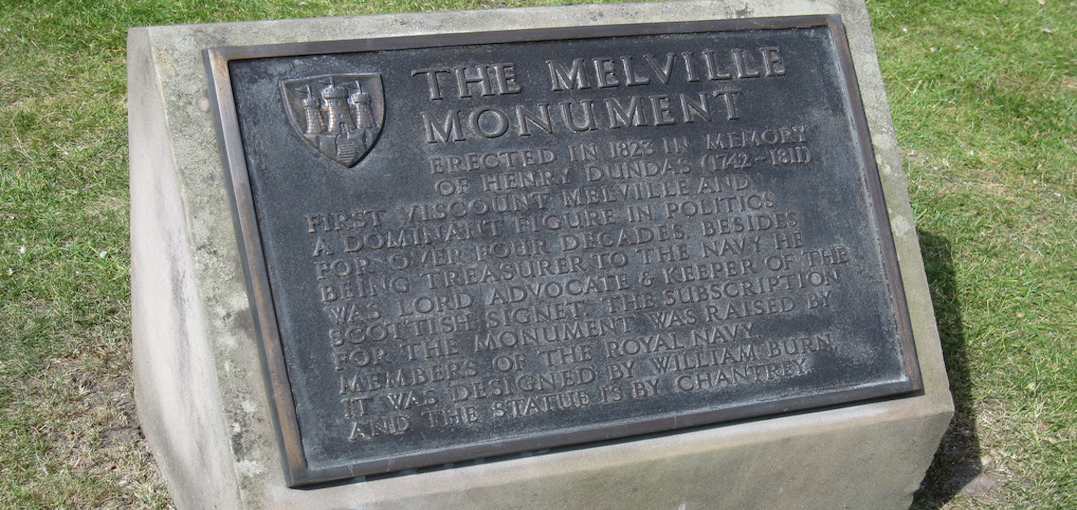For: Statues do not help educate us about our country’s dark past
By Carlotta Mickeleit
History is not just a thing of the past; it influences our everyday life. In a city like Edinburgh, one is constantly aware of its presence as it looks down on us through the eyes of dozens of statues. One of the largest statues depicts Henry Dundas, “the Great Tyrant” of the 18th century who, among other terrible achievements, prolonged the slave trade by decades. It took activist Adam Ramsay’s petition to amend the plaque on Dundas’ statue to make the public aware of this. But is that enough? Or should we be more radical in our demands: should Dundas’ statue be removed?
The question is not really about Henry Dundas or whether he was a villain or hero. The issue is whether we will acknowledge the power our past still holds over us.
Historical education is key. However, I would argue, statues are doing a poor job at educating us. Even if there was a plaque highlighting a historical figure’s wrongful as well as rightful acts, how many people would actually pay attention to it? Statues are reminders of our past, but they are not the only thing keeping it alive. Schools, museums and public broadcasters need to play a bigger role in education about our history, because the wish for the removal of a statue does not equal a wish for ignorance or oblivion.
Removing a controversial statue would force us to confront our past instead of just passing by it on our way to work. The removal of Confederate statues in the US and Nazi symbols in Germany shows that it can open up new ways to engage with our legacies.
But can (or should) we judge statues by modern standards? Answering this question with no would imply that we are detached from history. Henry Dundas represents issues like xenophobia and imperialism. These are issues that we still face today, as we are witnessing a surge of right wing populism.
It is vital to take a stand. Letting figures like Henry Dundas, Cecil Rhodes or Robert E. Lee stand in the middle of our cities, without questioning their legacies, is a negligence that we cannot afford anymore. Demanding the removal of statues might be radical, but it acknowledges that the issues that make them controversial are not a thing of the past, but heavily shape our present. It implies hope that we will be able to overcome these issues in the future.
Against: Statues serve as important reminders of our history
By Neja Zupan
The statue of Henry Dundas in St. Andrew’s Square is undeniably not a statue of a hero, as a campaigner Adam Ramsey quite rightly pointed out by gluing an accurate description of Dundas and his actions to the door of the monument. It sparked a dilemma as to whether the statue should be removed or not, and before finding your own viewpoint on this, I would like to encourage you to ask yourself a simple question: How often do you walk past a statue and stop to read the words written on it or inspect what the statue actually represents?
I do not want to do injustice to those who actually do read what is written on monuments, but I would confidently guess that most of us do not do so. I most definitely do not imply that just because we do not pay attention to statues around us it does not matter what they are or who they represent. I would rather like to point out how little we are concerned with historical monuments and figures sometimes and we should therefore pay more attention to them. Why?
Firstly, statues like Dundas’ are of historical importance, whether they remind us of pleasant or less pleasant events that happened. While Dundas’ actions perhaps resulted in quite horrific consequences, it still holds significant historical importance and information that should not be removed. It does not invite us to honour and praise him. This perhaps leads to a solution more appropriate than removing the statue, which is to provide accurate and honest information of who the statue represents, thus why is it there in the first place. I believe this is what Mr Ramsay was trying to accomplish with his gesture and, later, petition. The second reason as to why Dundas’ statue should not be removed is that the world is not going to be a “better place” with solely heroic statues. Similarly, history will not be erased or ignored by removing statues such as Dundas’. They will rather be a remnant of society’s progress, encouraging us to keep moving forward.
Image: BerntRostad via Flickr

